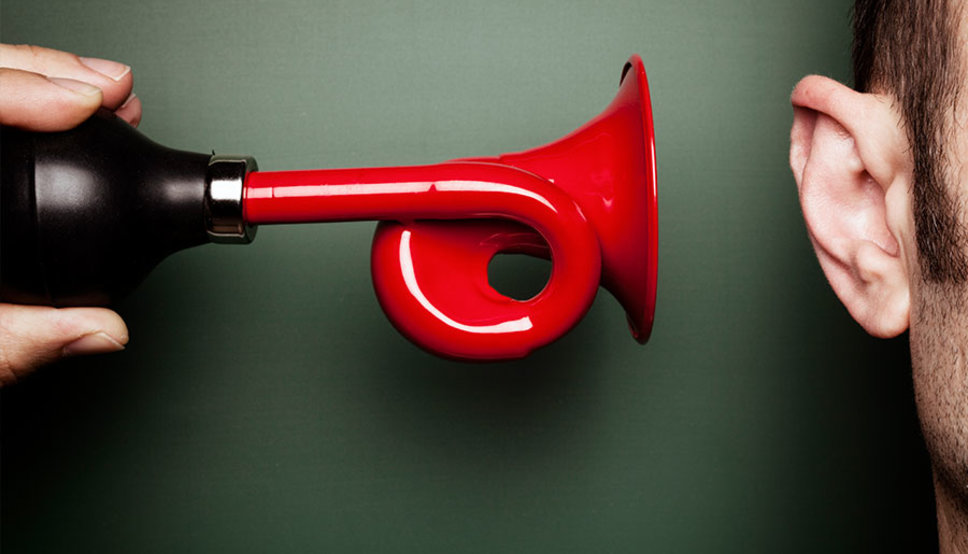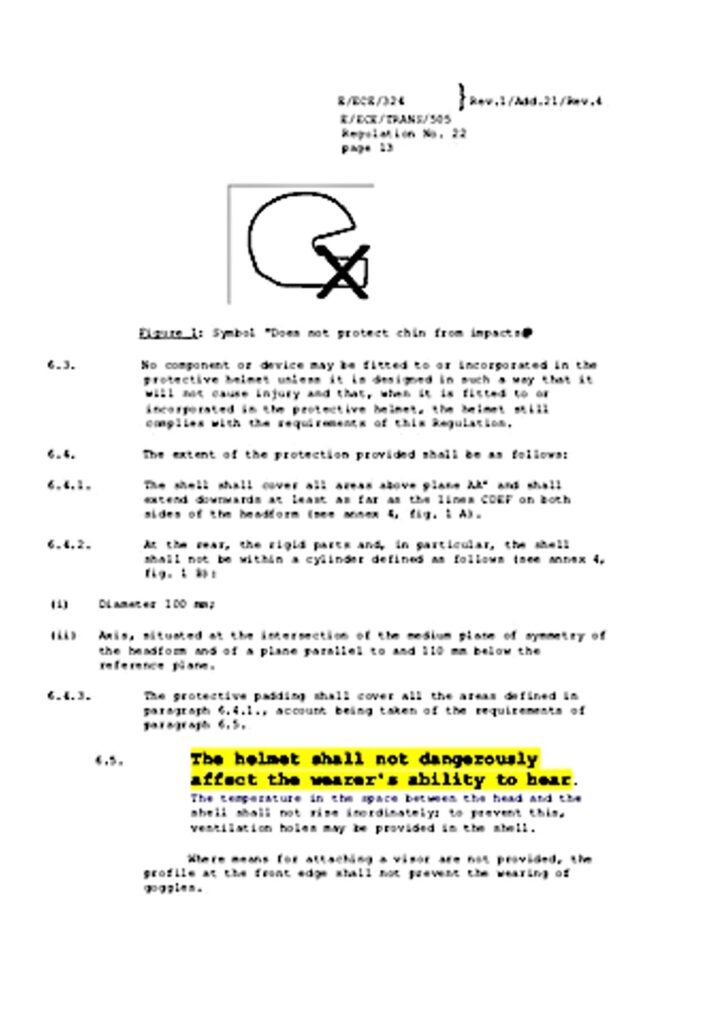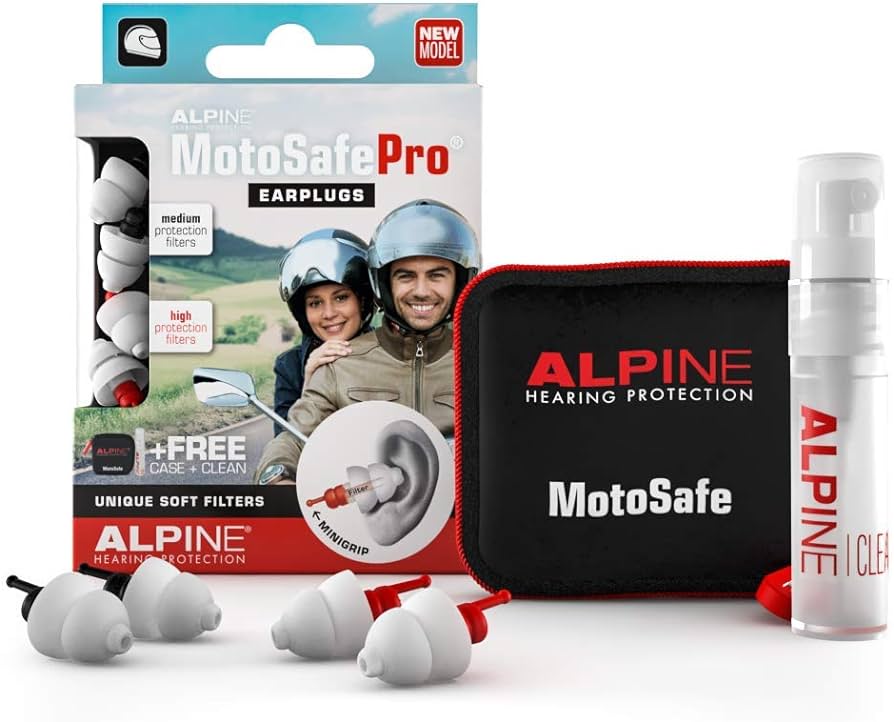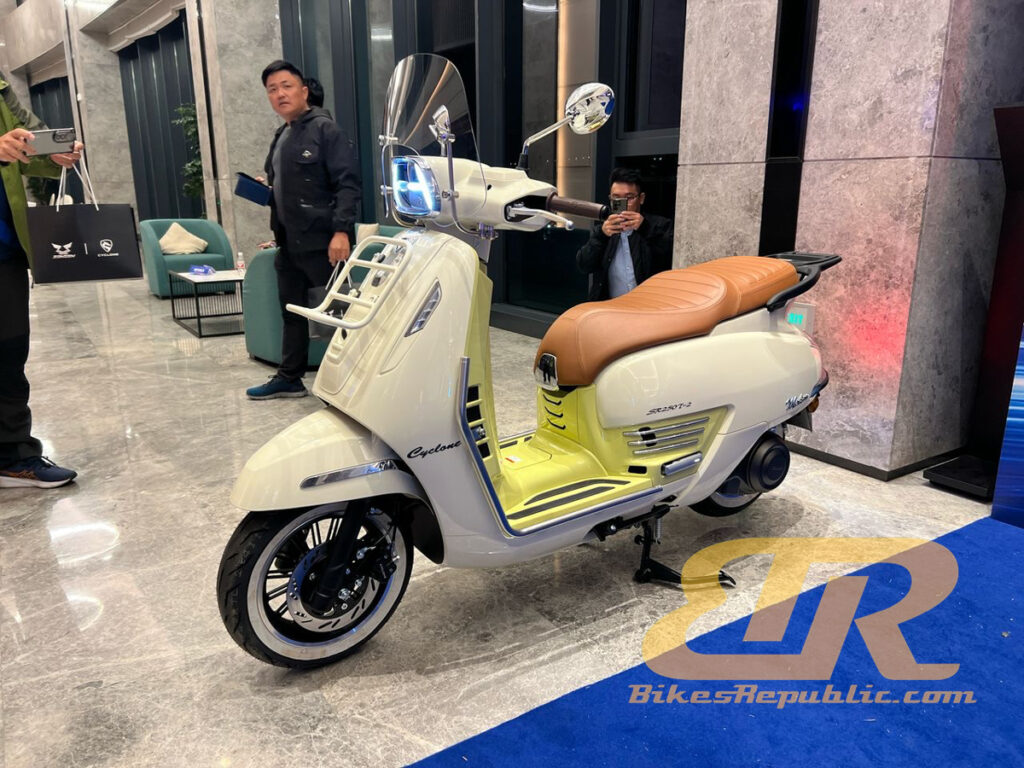There are several important aspects we look for when we buy a motorcycle helmet: Style, safety, features, comfort, price, although not necessarily in that order. There is another factor: Wind noise. Or more ideally, a completely silent helmet. Is that possible?
Continued exposure to exceptionally high levels of wind noise results in severe consequences such as permanent hearing loss. And no hearing aid and amount of surgery can bring that hearing back. Problem is, hearing damage creeps up progressively but early symptoms include the ears feeling “stuffy.” If unchecked, this damage will continue until the ears start ringing, a condition called tinnitus.
Additionally, wind noise distracts you from fully concentrating on your riding, besides tiring you out quicker.
Let us cut to the chase: Is there a completely silent helmet?
The law says NO
To be blunt, helmet regulations do not allow for a completely silent helmet. See the picture below, which is a page taken from the ECE R22 regulations pertaining to helmet tests.
Paragraph 6.4.5 states:
The helmet shall not dangerously affect the wearer’s ability to hear.
In other words, the helmet must not filter out environmental sounds and putting the wearer in a bubble of Zen. It is for safety purposes as you may imagine as aural cues keep us safe as we know if there is a vehicle in proximity. Additionally, ride long enough and we listen to the engine’s note as when to shift gears or gauge our speed.
However…
Premium helmet makers would already have the technology to produce a silent helmet by now. But since it is dangerous to do so, there are ways of making helmets as quiet as possible by:
- Ensuring a better fit. A better fitting helmet provides less room for air to move around inside the helmet. This fit also goes for the chin curtain which reduces airflow from underneath the helmet.
- Better visor seal. Ensuring the visor sits flush with the rubber seal around the helmet’s aperture (face opening) keeps wind out. A side benefit of this keeps water out, too.
- Better aerodynamics. The main function of motorcycle helmet aerodynamics is to reduce or eliminate helmet movements due to air pressure at high speeds, and to elevate the wearer’s safety and comfort. An aerodynamically “slippery” helmet also alleviates some of the stresses on the wearer’s neck muscles. A benefit of this is a quieter helmet.
In closing
There are ways in which the wearer can reduce noise, given the absence of a completely silent helmet. One is by wearing earplugs. There are “smart” earplugs that filter out the harmful frequencies and noise while allowing certain important sounds through such as speech, engine note, some environmental sounds through. This writer has gotten so used to wearing earplugs that he cannot ride without them. Cutting out wind noise helps with concentrating on riding, too.
Another is of course by wearing a full-faced helmet. It is absurd to compare the wind noise in an open-faced helmet to a full-faced helmet.




















